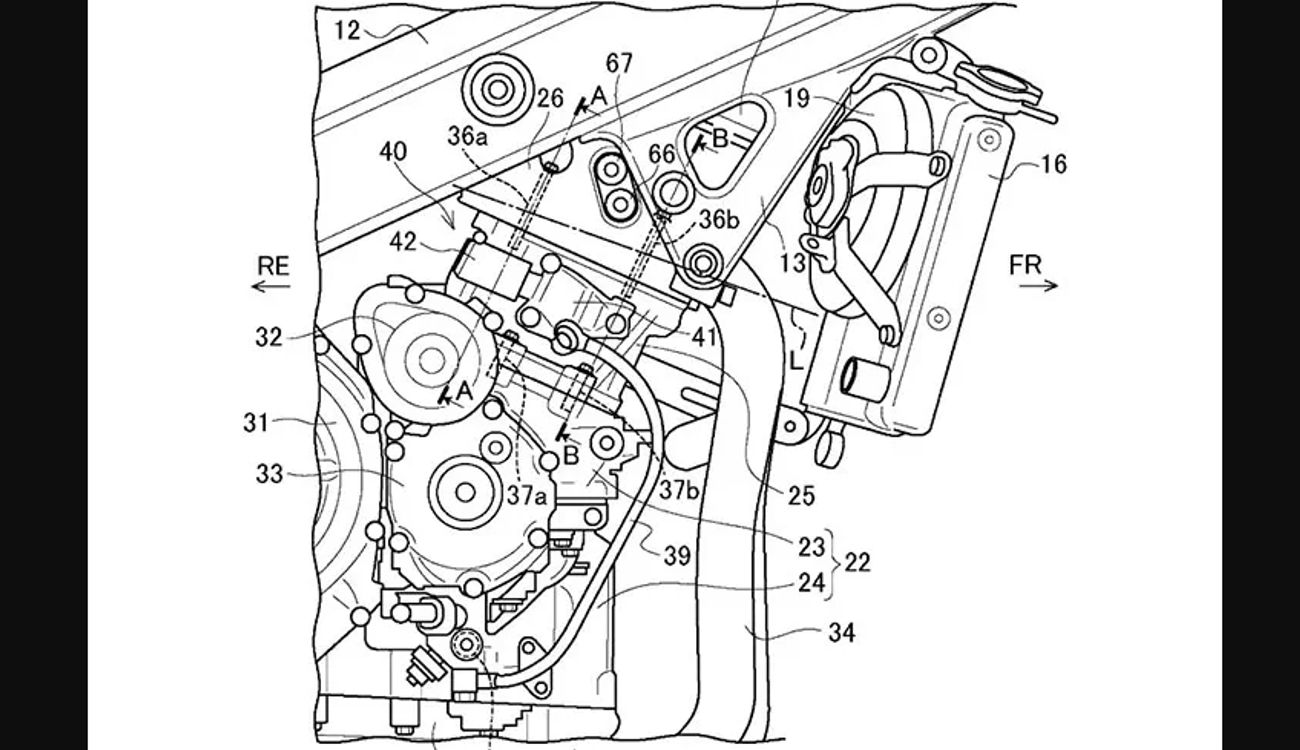Suzuki Patents Reveal New VVT Engine

Highlights
- Suzuki is working on VVT tech for multiple models
- Latest patent filings reveal VVT tech for a 250 cc parallel-twin
- VVT offers several advantages in performance and emissions
Latest patent images reveal that Suzuki has been working on a small-displacement motorcycle engine with variable valve timing (VVT). The idea of variable valve timing in motorcycle engines isn’t new, with BMW Motorrad already having its ShiftCam technology, and Yamaha having a VVT system in its YZF-R15. In fact, Suzuki already has VVT technology in its 2017 GSX-R1000 engine that was inspired by the GSX-RR MotoGP bike. Now, Suzuki seems to be working on introducing VVT tech in its smaller machines.
Also Read: Suzuki V-Strom 800 DE To Be Launched In India On March 29

Suzuki had also filed patents which show a variable valve timing system for the Hayabusa.
The system on the bigger Gixxer uses a mechanical cam-phasing setup which allows the timing of the intake camshaft to be advanced or retarded by a few degrees depending on engine revs. The system relies on centrifugal force to alter the valve timing as engine revs increase. Advanced VVT systems like BMW’s ShiftCam and KTM’s new system on the 1390 Super Duke also alter valve lift, which is essentially how wide the valve is opened. So far, only Yamaha has been using variable timing and lift systems on its Variable Valve Actuation (VVA) tech, and this is the kind of technology Suzuki seems to be working on.
Also Read: Suzuki GSX-8R Showcased At Bharat Mobility Expo

Could a future 250 cc model like the V-Strom SX get VVT tech?
The advantages of variable valve technology are many. Simply put, it helps the valvetrain more efficient, resulting in a better breathing engine and improve combustion. And the result is a combination of better top-end performance, as well as wider torque spread, which is what is desirable when it comes to motorcycle engine performance for the real world.
Also Read: Suzuki V-Strom SX Review

The patent images show a parallel-twin engine, so Suzuki’s current 248 cc parallel-twin engine (currently not available in India but used in models like the Inazuma and the GSX250R) is likely to benefit from the new tech. The VVT tech may well be used in Suzuki’s 250 cc single-cylinder engine as well, used in the current Gixxer 250 and V-Strom 250 SX. While the patent filings is just an indication, future 250 cc Suzukis may benefit from this tech, as well as mid-size models.









